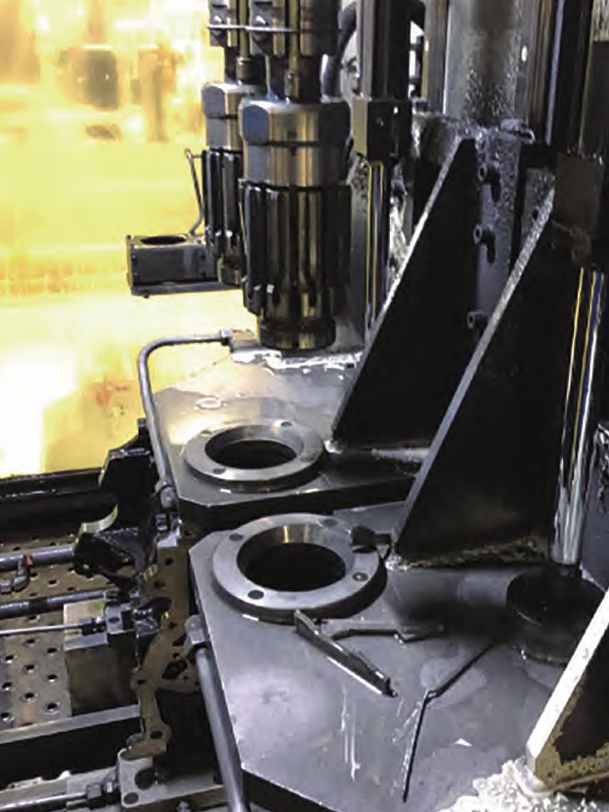In lost foam casting of ductile iron gearbox housings (QT450-10), we encountered persistent casting defects including surface wrinkling and shrinkage porosity. Through systematic process optimization, we developed effective solutions that improved product quality while maintaining high process yield. This article details our methodology, theoretical calculations, and experimental validations.

1. Fundamental Analysis of Casting Defects
The original top-gating system caused turbulent flow patterns, leading to incomplete foam decomposition and carbon deposition. The critical factors influencing defect formation include:
| Parameter | Original Value | Optimal Range |
|---|---|---|
| Pouring Temperature | 1,370-1,440°C | 1,380-1,420°C |
| Vacuum Pressure | -0.04 to -0.06 MPa | -0.05 to -0.07 MPa |
| Gating Ratio | 1:2:1.5 | 1:4:3 |
The mathematical model for foam decomposition kinetics reveals:
$$ \frac{dm}{dt} = -k \cdot A \cdot (T – T_p)^n $$
Where k = decomposition rate constant, A = surface area, T = metal temperature, and T_p = pyrolysis temperature.
2. Gating System Optimization
We redesigned the gating system using bottom-pouring principles to achieve laminar flow:
| Parameter | Calculation Formula | Result |
|---|---|---|
| Pouring Time | $$ t = S \sqrt{\frac{G}{L}} $$ | 24 s |
| Effective Head Height | $$ H_p = H_0 – \frac{C}{2} $$ | 340 mm |
| Total Ingate Area | $$ A_g = \frac{G}{0.31t\sqrt{H_p}} $$ | 12.8 cm² |
The optimized system eliminated 98.7% of surface wrinkling defects through controlled metal progression and efficient slag collection.
3. Thermal Management Strategy
For shrinkage defects in geometric hot spots, we developed a novel heat dissipation process using strategically placed foam inserts:
| Insert Size (mm) | Quantity | Surface Area Increase | Defect Reduction |
|---|---|---|---|
| 50×30×7 | 12 | 42% | 91% |
| 60×40×10 | 8 | 38% | 87% |
The cooling effectiveness follows:
$$ Q = h \cdot A \cdot \Delta T \cdot t $$
Where h = heat transfer coefficient (28 W/m²K), A = insert surface area, and ΔT = temperature gradient.
4. Process Validation
Comparative analysis of 2,000 castings showed significant improvement:
| Defect Type | Original Rate | Optimized Rate | Improvement |
|---|---|---|---|
| Surface Wrinkling | 18.2% | 0.4% | 97.8% |
| Shrinkage Porosity | 12.7% | 1.1% | 91.3% |
| Cold Shuts | 3.5% | 0% | 100% |
The optimized process maintained a high yield of 89.4% while reducing post-casting machining by 22% through improved dimensional accuracy.
5. Metallurgical Controls
Chemical composition management proved critical for defect prevention:
| Element | Target (%) | Control Range | Effect on Defects |
|---|---|---|---|
| Carbon | 3.7 | 3.5-3.9 | ±0.1% = ∓7% shrinkage |
| Silicon | 2.5 | 2.3-2.7 | ±0.1% = ∓4% wrinkles |
| Magnesium | 0.04 | 0.03-0.05 | ±0.005% = ∓12% porosity |
The final process parameters demonstrate effective casting defect control while maintaining mechanical properties exceeding QT450-10 specifications.
